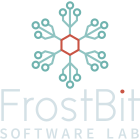There are as many as 46 mines in Finland, with more than 5,000 employees in 2018. Especially in northern Finland, the mining industry is an important employer for many and is an source of livelihood in areas where diverse employment and welfare development can be otherwise challenging (Kaivosteollisuus.fi). There is also a wide range of education possibilities of mining industry throughout Finland, which is why the reform of degree structures and the development of modern learning methods are topical due to the growing demand of the field.
Since mining is such a practical field, how could its education be modernized? The Migael-project answers this question with gamification and modern technologies. The aim of the project is to develop mining education by creating a virtual learning environment with a variety of scenario-based exercises. By the beginning of 2021, three exercises have been completed in the project and the fourth exercise will be finalized during February. Each exercise focuses on different “scenarios” in the open-pit-mine as well as in the underground mine. For each exercise, different platforms and technologies have been utilized to achieve the learning goals:
Charging/Blasting
In the first exercise, the player will be able to practice the charging of explosives in 2D view, as well as view the simulation of charging and blasting in both 3D- and Oculus Guest virtual views. In the exercise, the player gets to simulate charges of different sizes and see what their blasting effect would look like.
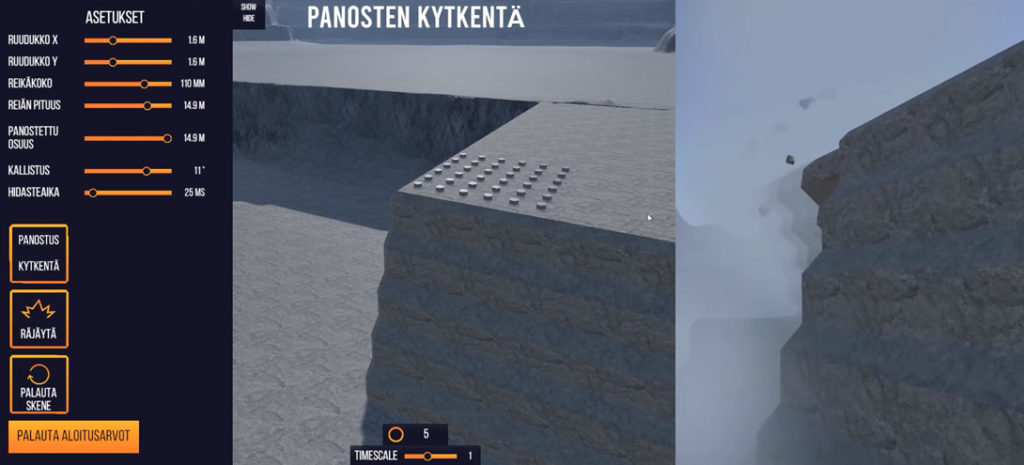
Workcard
The second exercise was also created to be played with Oculus Guest’s VR-glasses. In this exercise, the player will be able to do an occupational safety card inspection at an underground mine. The player is able to move around the underground mine and observe the necessary safety measures and fill in the occupational safety card accordingly.
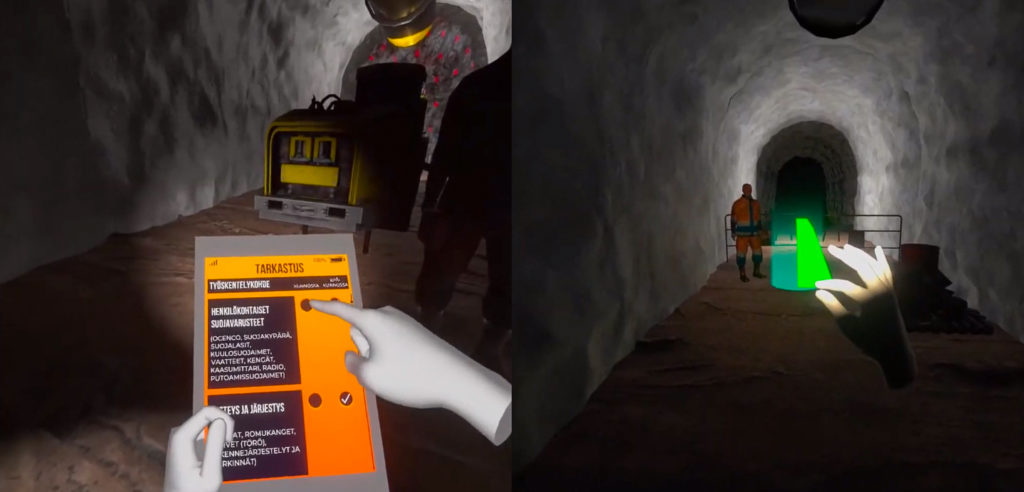
Driving departure
The third exercise was created to be played on both Oculus Rift VR-glasses and Android phones, and this exercise will go through a mining vehicle run-in inspection. The player must check the worker’s safety equipment and the condition and usability of the mining vehicle before it can departure.
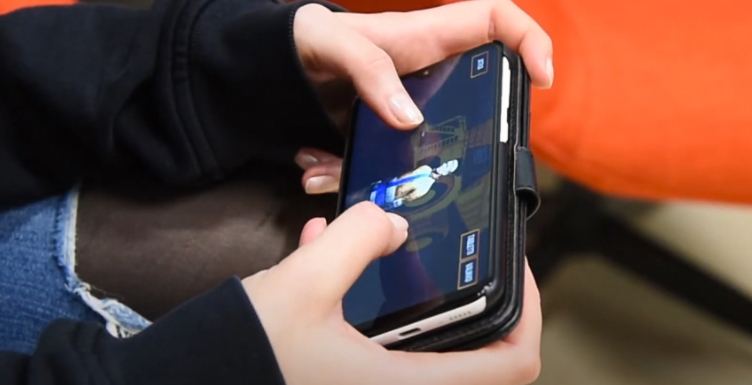
PRE- and POST-blasting safety measures
In the fourth exercise, the player performs the pre-blast and post-blast safety measures. The exercise was made into a more traditional 3D-desktop “serious game”, since it is possible to make more use of textual teaching material on a wide range of topics. The player gets to observe objects in the open-pit-mine environment to secure the area before and after the blast.
Different technical implementations enable different ways of presenting or simulating the subject to be taught. VR-technology is able to take a player or learner to a realistic learning situation that responds as much as possible to a real life situation. In this way, for example, training situations can be usefully simulated when the implementations in real life would be demanding, costly and often dangerous. Implementation on a mobile platform establishes easier learning regardless of time and place, and this can help to reach a wider group of users. Therefore, in the third exercise, for example, the driving departure was implemented for both VR glasses and mobile.
However, virtual glasses create their own challenge if the material and subject area is extensive and requires more than observation and “tangible measures.” While instructions for “floating texts” can be established on virtual glasses, interactive texts combined to player movement and other activity can create an unnecessary challenge in the VR-world. For this reason, the fourth exercise of Migael was created as a 3D-desktop game, as the topic required a lot of text in the form of teaching material and other information. In this exercise, it was necessary to plan particularly carefully which operations should and could be “gamified”, as there are several safety measures related to blasting. Some of the most generic and difficult operations were implemented in the form of cinematic transitions and instructions given by the game’s characters:
Thus, different technological implementations can enable different ways of learning and achieve certain learning goals. Some technologies allow for a more realistic simulation of exercises, while others allow for a broader presentation of the content and the possibility to reach a larger target audience. The exercises produced in Migael form a gameful learning environment where you can experience the benefits of many new technologies and learn about the mining industry in an inspiring and safe way. The aim of the project is to make the mining industry more visible and interesting, especially for students, and to establish important and safe training regardless of time and place.
In addition of the fourth exercise being completed soon, the early part of the year 2021 is eventful for the project: a Teams-webinar titled as ‘Utilization of modern technologies in the mining sector’ will be held on 25.01.2021 as part of the project. In addition to the FrostBit lab, the webinar will feature speakers from VTT and Kajaani University of Applied Sciences, who will present, amongst other things, the possibilities of gamification, VR / AR technologies and new sensor technologies in the mining industry. Mining staff, project staff and students of Lapland University of Applied Sciences will be invited to join and listen to the webinar.
The project’s activities will be updated on its official website, which includes a blog and the downloadable exercises: www.migael.fi
In addition, see the FrostBit portfolio-page of Migael: https://www.frostbit.fi/en/portfolio/migael-en/
The northen Ostrobothnia of Centre for Economic Development, Transport and the Environment has granted 337 502 € from the European Social Fund (ESF) and state funding for the Migael-project. The total cost of the project is 450,002 €.

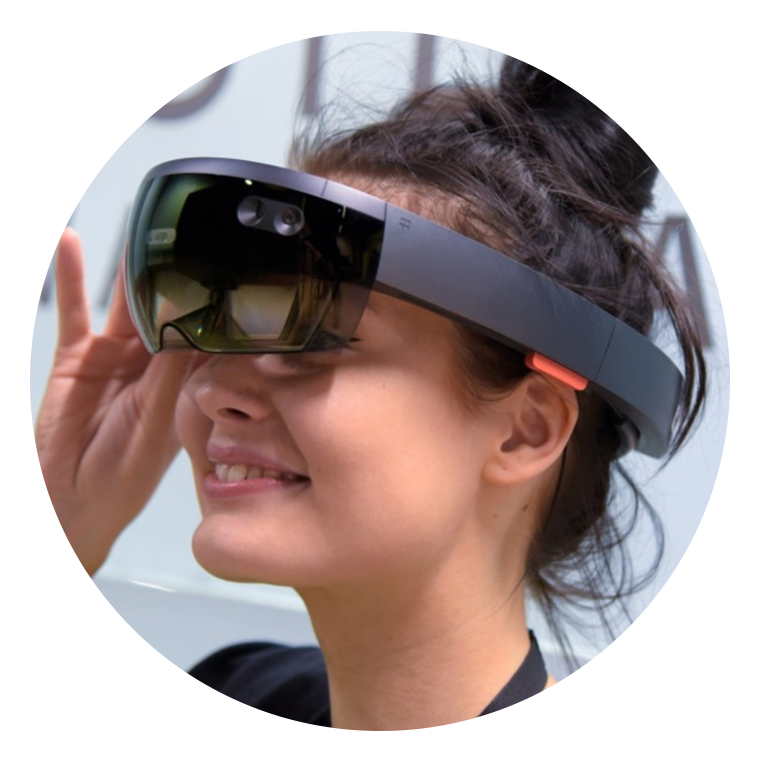
Tuuli Nivala
Tuuli works as a specialist in FrostBit at the LapUAS. In her current role she utilizes her game pedagogical knowledge in game design, as well as participates in project planning and some 2D graphic design. She also does marketing and AV-media material for the laboratory.
